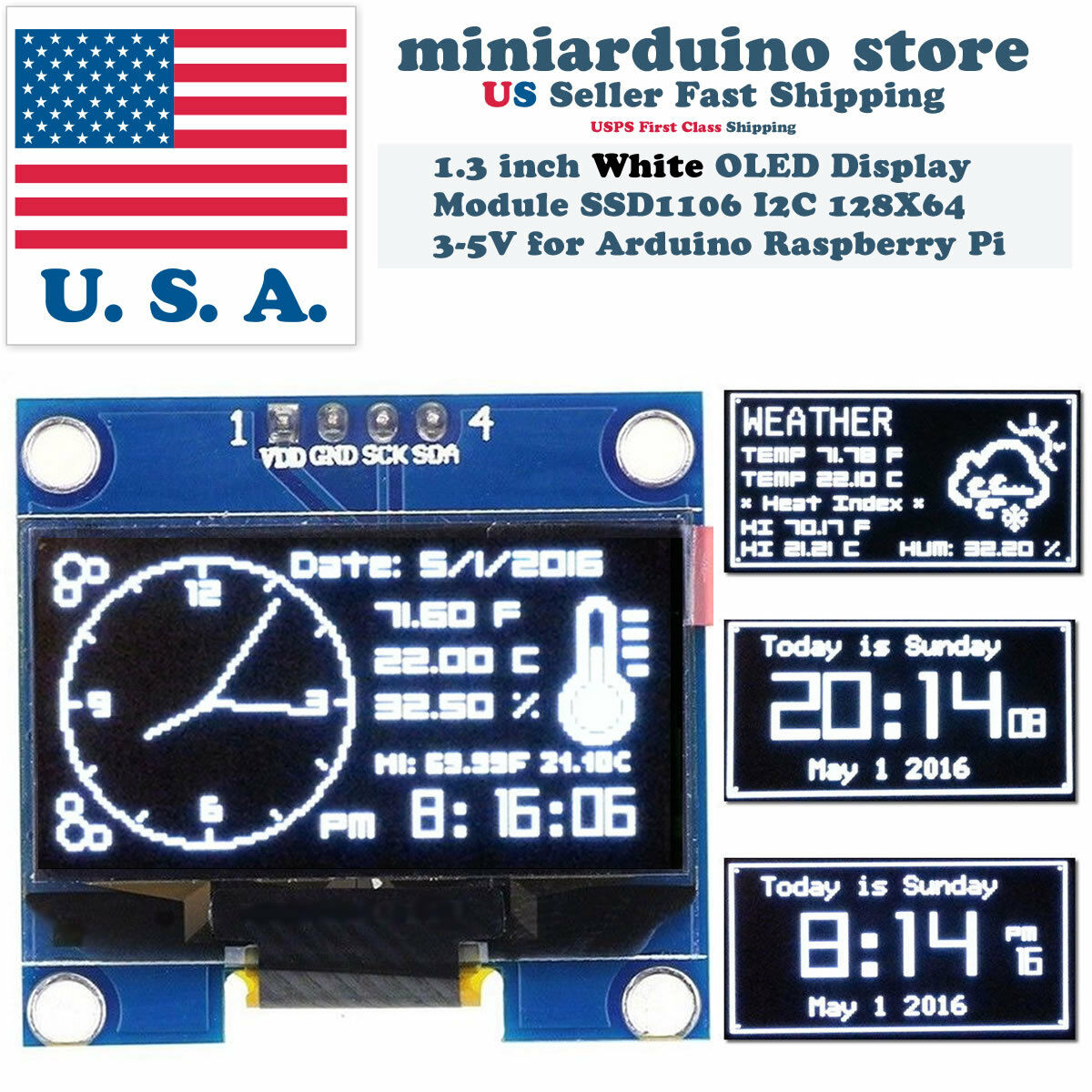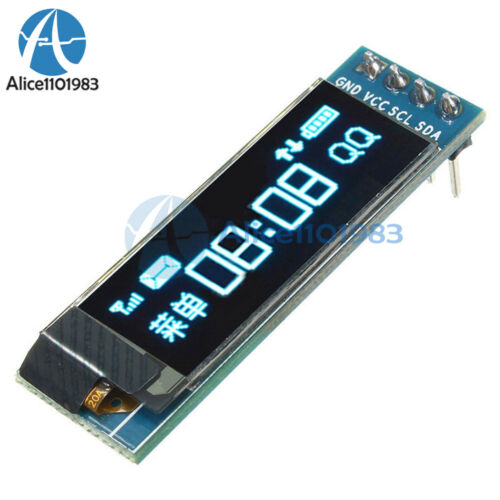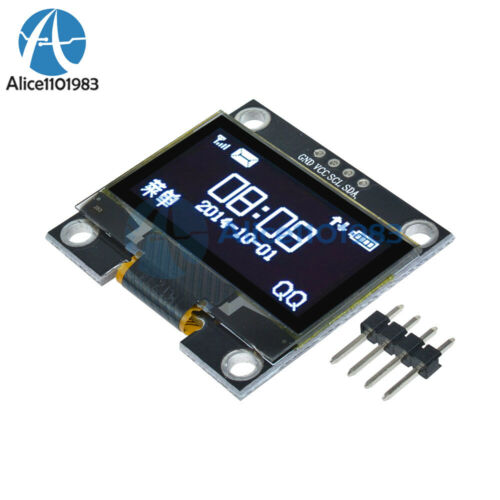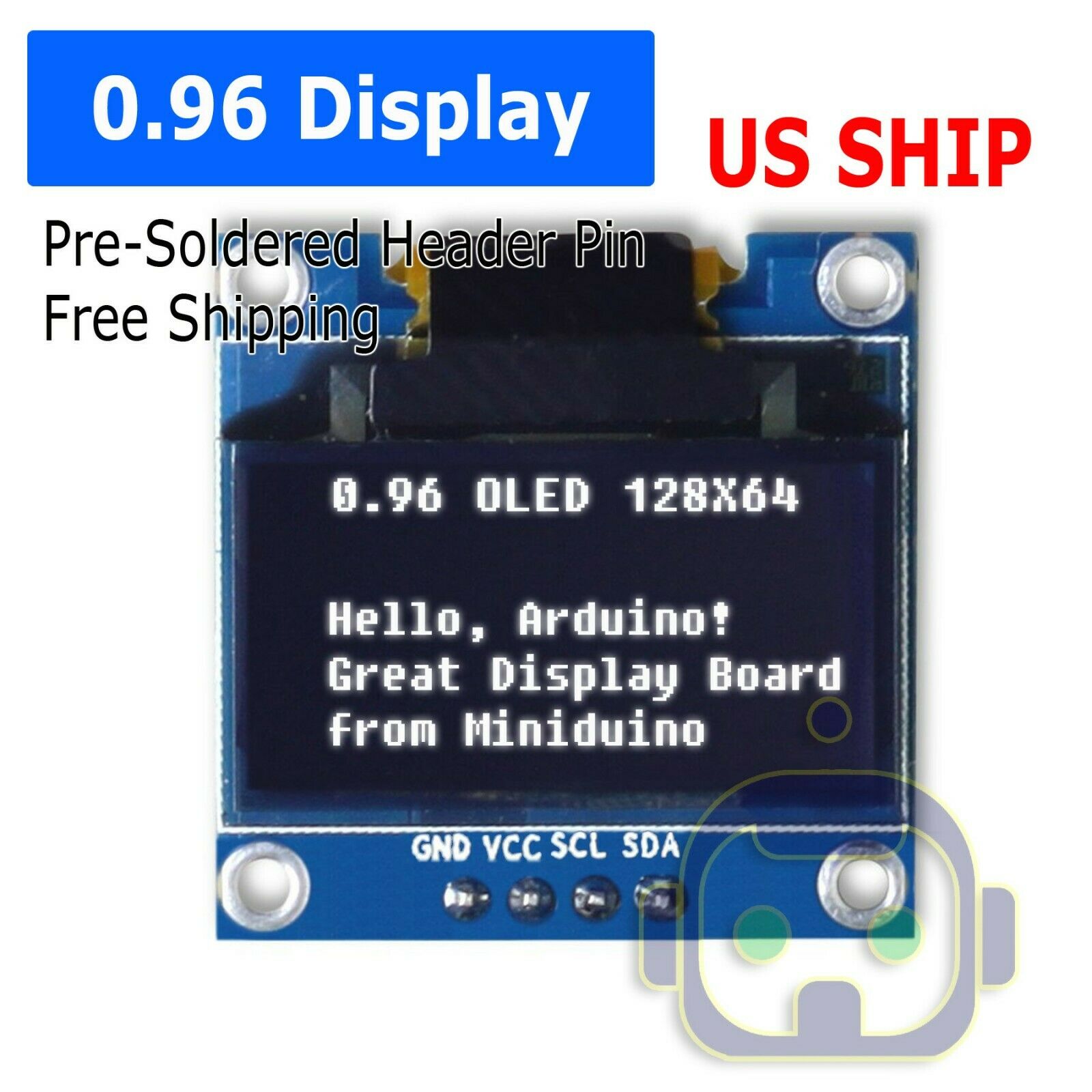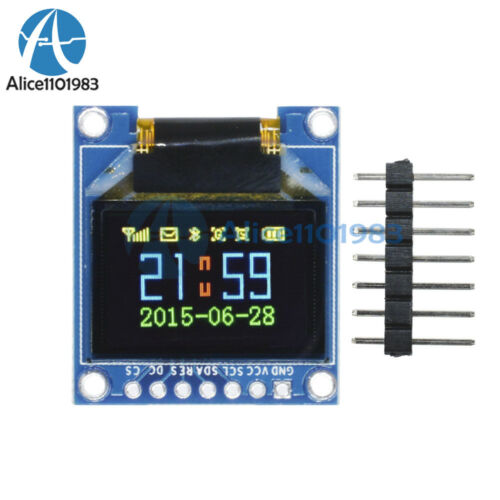-40%
1.3" I2C IIC 128X64 LED OLED LCD Display Module Arduino White Color SSD1106 US
$ 3.32
- Description
- Size Guide
Description
Specifications:Color: White
Size: 1.3 inch
Resolution: 128 x 64
Controlling Chip: SSH1106
Display Area: 29.42 x 14.7mm
Driving Voltage: 3.3V-5V
Interface type: IIC
Operating Temperature:-40~70 Celsius
Interface:
VDD: 3.3-5V
GND: Ground
SCK: Serial Clock
SDA: Serial Data
Driver IC: SSD1106
What is OLED ?
OLED (Organic Light-Emitting Diode) is a self light-emitting technology composed of a thin, multi-layered organic film placed between an anode and cathode. In contrast to LCD technology, OLED does not require a backlight. OLED possesses high application potential for virtually all types of displays and is regarded as the ultimate technology for the next generation of flat-panel displays.
The use of OLED technology offers the following advantages for flat-panel displays ?
1. A simplified manufacturing process compared to TFT-LCD (See comparison of Picture 1 and Picture 2 below)
2. Self-emitting light, in contrast to the required backlight for TFT-LCD
3. High luminosity
4. Lightweight and thin (less than 2 mm)
5. Low operating voltage and power consumption
6. Wide range of operating temperatures (-40℃ to 85℃)
A Comparison of OLED and TFT-LCD Display Technologies
How Does OLED Emit Light ?
OLED”s basic structure consists of organic materials positioned between the cathode and the anode, which is composed of electric conductive transparent Indium Tin Oxide (ITO). The organic materials compose a multi-layered thin film, which includes the Hole Transporting Layer (HTL), Emission Layer (EML) and the Electron Transporting Layer (ETL). By applying the appropriate electric voltage, holes and electrons are injected into the EML from the anode and the cathode, respectively. The holes and electrons combine inside the EML to form excitons, after which electroluminescence occurs. The transfer material, emission layer material and choice of electrode are the key factors that determine the quality of OLED components.
Package included:
1 x 1.3" I2C IIC 128X64 LED OLED LCD Display Module for Arduino White
Technical support is
not
included in this auction
